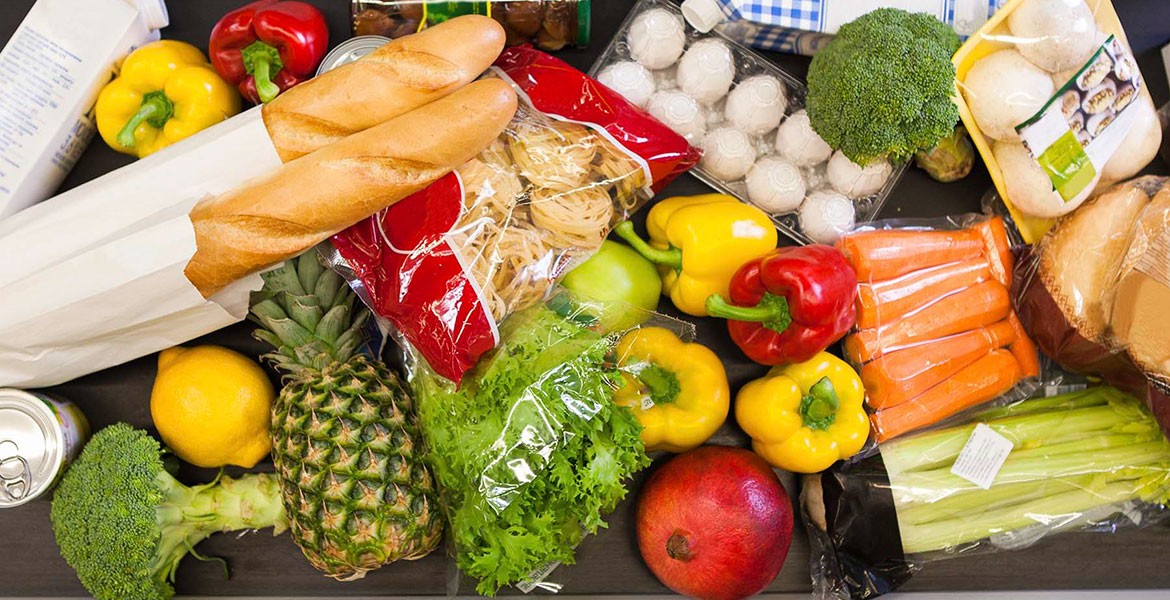
Healthier eating in a SNAP
Wednesday, June 26, 2019
Despite being referred to as the 2018 Farm Bill by most of the public, the Agriculture Improvement Act of 2018 dedicated a larger percentage of funding to nutritional assistance rather than farms themselves.
Rodney Holcomb, agribusiness economist for Oklahoma State University’s Robert M. Kerr Food & Agricultural Products Center, and Aaron Ates, recent Ph.D. graduate from OSU, examined the spending habits of households currently being supported by the Supplemental Nutrition Assistance Program administered by the Food Nutrition Service of the United States Department of Agriculture.
“Back in the 2008 Farm Bill there was a pilot study done to see if there were things you could do to help SNAP recipients buy more healthy food,” Holcomb said. “It was proposed in the 2018 Farm Bill that you would expand that and take some of those trial measures and implement them as part of the SNAP program.”
While none of these trial measures were implemented in the latest bill, Holcomb said it is still within the administrative oversight of the USDA and FNS to incentivize consumption of healthier products by SNAP program participants.
With this in mind, Holcomb and Ates conducted research in hopes of shedding more light on the spending habits of SNAP participants.
“The big concern is that if they get assistance to help them meet their dietary needs, it may help them get more food,” Holcomb said. “But how much and what kinds? And that’s what we’re looking at.”
Holcomb and Ates looked at a national data set and broke the monitored households into three categories – SNAP participating, SNAP eligible but not participating and SNAP ineligible.
“It takes a look at exactly what people buy in the course of a week,” he said. “You know exactly what they purchased, what they paid for it. And to a degree, you even get a pretty good idea of what the macronutrients of the products are.”
These macronutrients show how many grams of fats, proteins and carbohydrates are in the purchased products.
Holcomb and Ates analyzed differences in food expenditures amongst the three types of households in hopes of revealing if SNAP assistance was linked to obesity.
“When we started looking at how many fat grams and overall calories are being consumed by SNAP participants, you do start to recognize the correlation [between SNAP assistance and obesity],” Holcomb said.
While it may be hard to prove direct causation between the two, Holcomb said this same correlation has been reflected in several other pieces of literature.
After studying the nutritional information of what households buy on a weekly basis, Holcomb said SNAP participating homes purchased items containing more grams of fat and close to 13% more calories than the other two groups.
Comparatively, households utilizing SNAP purchased more cereal products, non-alcoholic beverages (such as soda) and highly processed meat products. These purchasing decisions led to a weekly acquisition of 5,000 calories over the amount required in a healthy diet.
This purchased food also contains levels of fat accounting for 43% of calories, levels higher than what is recommended by the Acceptable Macronutrient Distribution Range.
The two household types not receiving SNAP funding had similar purchasing patterns. Both groups purchased similar products at similar prices in similar amounts.
Both of these groups also spent a lower percentage of their household income on food, data Holcomb said reflected basic principles of the economy.
“The first law of economics is Engel’s Law,” Holcomb said. “As income goes up, the percentage of income you spend on food goes down.”
Holcomb said it was no surprise households participating in the program were spending about 10% more of their income on food than ineligible households.
The research does not take into account food eaten away from home, as SNAP funding does not cover this type of food purchase, or how much food is being wasted, Holcomb said. Both scenarios naturally occur in all three types of households but prove difficult to measure.
“That’s the part we just don’t have a handle on,” he said. “But, according to the data, if you’re in SNAP, you acquire a whole lot more than what is required for you to maintain a healthy existence.”
This research’s future includes being published in hopes of helping the USDA and other nutritional researchers determine how to incentivize SNAP participants to spend more of their portion on healthier options, Holcomb said. The intent is to provide data to help researchers quantify the impact of SNAP assistance.
“The idea is you want people to have great access to a healthy diet,” Holcomb said. “They’re having greater access to food, but not necessarily a healthier diet. Are there things that should be considered to promote a healthier diet?”
To learn more about FAPC, visit www.fapc.biz or download the free FAPC Connect app by texting FAPC to 80802 or visiting www.fapcconnect.com.
MEDIA CONTACT: Mandy Gross | FAPC Communications | 405-744-0442 | mandy.gross@okstate.edu
